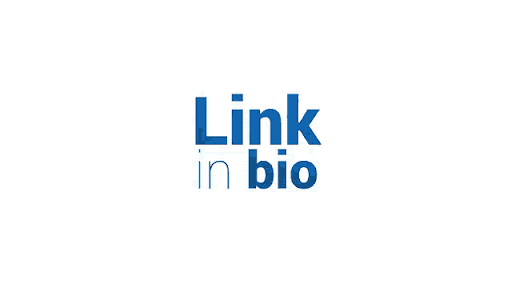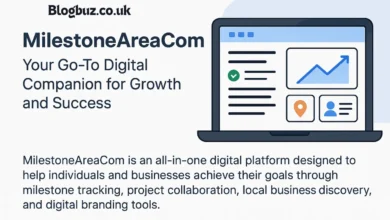The Complete Guide to Building Your Creator Business: From Links to Sales in 2025

The creator economy has exploded into a multi-billion dollar industry, and if you’re reading this, you’re probably looking to claim your piece of it. Whether you’re a content creator, influencer, coach, or digital entrepreneur, the path from creating content to generating consistent revenue has never been more accessible—but it’s also never been more competitive. The difference between creators who struggle and those who thrive often comes down to one critical factor: how effectively they convert their audience into customers.
In today’s digital landscape, your social media bio link isn’t just a simple URL—it’s your digital storefront, your sales funnel, and often the only bridge between your content and your income. As we navigate through 2025, understanding how to optimize every touchpoint in your customer journey has become essential. From choosing the right tools to structuring your offers, every decision impacts your bottom line. That’s why exploring innovative solutions for your link in bio 2025 strategy has become a non-negotiable part of creator success.
The Evolution of the Creator Business Model
Gone are the days when creators relied solely on ad revenue or brand sponsorships. Today’s successful creators have diversified income streams that include digital products, memberships, coaching, physical merchandise, and affiliate partnerships. This shift has fundamentally changed what creators need from their digital infrastructure.
The traditional approach of using free tools and cobbling together multiple platforms no longer cuts it. Creators are dealing with increasingly sophisticated audiences who expect seamless experiences. When a potential customer clicks your bio link and encounters a clunky, unprofessional landing page, or worse, has to navigate through multiple links to find what they’re looking for, you’re losing sales before you even have a chance to make your pitch.
The modern creator business requires a unified ecosystem where content discovery, product browsing, checkout, and customer support all flow together effortlessly. This is particularly crucial when you consider that most of your audience is browsing on mobile devices, often with limited attention spans and even more limited patience for complicated processes.
Understanding Your Creator Stack: Tools That Make or Break Your Business
Your creator stack—the collection of tools and platforms you use to run your business—can either amplify your efforts or create endless friction. Many creators start with free or cheap tools, which seems smart from a budget perspective. However, as your business grows, you quickly discover the hidden costs: transaction fees eating into your margins, limited customization making your brand look generic, integration headaches causing technical issues, and platform limitations preventing you from scaling.
The stan store vs pop store creator business debate illustrates this perfectly. While there are numerous platforms vying for creator attention, the key is finding one that grows with you rather than holding you back. The right platform should handle everything from link management to payment processing, from digital product delivery to customer analytics, all while maintaining your brand identity and providing an excellent user experience.
Building an Effective Sales Funnel Through Your Bio Link
Your Instagram, TikTok, or YouTube bio link is prime real estate. For most creators, it’s the primary gateway between their content and their commercial offerings. Yet many creators waste this opportunity by treating it as a simple directory of links rather than a strategic sales funnel.
An effective bio link strategy starts with understanding your customer journey. Someone who just discovered you needs different information than a longtime follower ready to buy. Your bio link page should guide visitors through a natural progression: capturing attention with your best content, building trust with social proof and testimonials, presenting your offers in order of value, and making the purchase process friction-free.
Consider the psychology of choice. Research consistently shows that too many options lead to decision paralysis. Instead of listing every single thing you offer, prioritize your most profitable or strategic offers. Use compelling copy and visuals to direct attention where you want it. Create urgency through limited-time offers or scarcity. And always, always optimize for mobile since that’s where the vast majority of your traffic will come from.
Monetizing Digital Products: The Highest-Margin Creator Income Stream
Digital products represent the holy grail of creator income. Unlike physical products, they have no inventory costs, shipping complications, or fulfillment headaches. Once created, they can be sold infinitely with minimal additional effort. The profit margins are typically 90% or higher, making them significantly more lucrative than almost any other creator income stream.
The key to successful digital product sales is solving specific problems for your audience. Generic ebooks rarely sell well. Instead, focus on creating products that deliver transformational outcomes. This could be a comprehensive course teaching a valuable skill, templates that save hours of work, exclusive content not available elsewhere, coaching or consulting packages, or membership communities with ongoing value.
Pricing digital products appropriately requires understanding your audience’s willingness to pay and the value you’re delivering. Don’t fall into the trap of underpricing because your product is “just digital.” Price based on the outcome you’re providing, not the format. A $997 course that helps someone start a profitable business is a bargain. A $7 ebook that doesn’t deliver tangible results is overpriced.
The Power of Integrated Commerce
One of the biggest mistakes creators make is fragmenting their business across too many platforms. You post on Instagram, link to Linktree, which links to Gumroad for products, which requires separate accounts for delivery, while you manage email on another platform and track analytics in yet another tool. Each additional platform adds complexity, creates potential failure points, and dilutes your brand experience.
Integrated commerce—having everything from discovery to purchase to delivery in one ecosystem—dramatically improves conversion rates. When a customer doesn’t have to create new accounts, re-enter payment information, or navigate to different websites, they’re far more likely to complete their purchase. The data backs this up: every additional step in a checkout process reduces conversion by an average of 10-20%.
Beyond conversion rates, integrated platforms provide better data. When everything happens in one place, you can see the complete customer journey. Which content drives the most sales? Which products do customers buy together? What’s the lifetime value of customers acquired through different channels? These insights are impossible to gather when your business is scattered across multiple platforms.
Customization and Brand Consistency
Your brand is your most valuable asset as a creator. It’s what differentiates you from thousands of other creators in your niche. Yet many creators undermine their brand by using generic link-in-bio tools that look like everyone else’s. When every creator’s bio link looks identical except for colors and photos, you lose the opportunity to reinforce your unique identity.
Professional creators invest in customization. This means custom domains that match their brand name, thoughtful design that reflects their aesthetic, personalized copy that sounds like them, and strategic layout that guides visitors intuitively. Your bio link page should feel like a natural extension of your content, not a jarring transition to a generic storefront.
The technical aspects matter too. Page load speed affects both user experience and conversion rates. Mobile responsiveness isn’t optional when 80%+ of your traffic is on phones. SSL certificates and secure checkout build trust. These might seem like minor details, but they add up to create either a professional, trustworthy experience or an amateur one that makes customers hesitate.
Leveraging Analytics for Growth
Flying blind is expensive. Without proper analytics, you’re guessing about what works and what doesn’t. Professional creator platforms provide detailed insights about your traffic, engagement, and conversions. You should be able to answer questions like: which social posts drive the most clicks to your bio link, what percentage of visitors make a purchase, which products are most popular, where visitors drop off in your funnel, and what’s your average order value.
This data informs every business decision. If you notice that Instagram Stories drive more qualified traffic than feed posts, you can adjust your content strategy. If a particular product has high page views but low conversions, maybe your copy needs work or your price point is off. If most visitors bounce immediately, your page design might be confusing or your offer isn’t compelling.
The most successful creators treat their business like a business, which means making data-driven decisions rather than operating on assumptions and hope. Set up tracking, review your metrics regularly, and continuously test and optimize. Small improvements compound over time into significant revenue increases.
Why Traditional Link-in-Bio Tools Are Holding You Back
The link-in-bio concept started with Linktree, which solved a simple problem: Instagram only allowed one link in your bio. As creators needed to share multiple links, these aggregator tools emerged. However, the creator economy has evolved far beyond this basic need, while many of these tools haven’t kept pace.
Most traditional link-in-bio solutions are limited in critical ways. They don’t actually process transactions, requiring you to link out to other platforms for sales. This creates friction and kills conversions. They offer minimal customization, making your page look generic. They provide limited analytics, giving you little insight into customer behavior. They charge transaction fees on top of subscription costs, eating into your profits. And they don’t integrate with other essential business tools, creating workflow inefficiencies.
For creators just starting out, these limitations might be acceptable. But as your business grows, you quickly outgrow these basic tools. The question isn’t whether you’ll need to upgrade, but when—and how much revenue you’ll lose before making the switch. That’s why exploring linktree alternatives has become crucial for serious creators looking to maximize their earning potential.
The All-in-One Approach: Simplifying Your Creator Tech Stack
The future of creator commerce isn’t more tools—it’s fewer, better tools that do more. All-in-one platforms that handle everything from link management to payment processing to product delivery are revolutionizing how creators operate. Instead of paying five different subscription fees and managing five different accounts, you have one centralized hub for your entire business.
This consolidation offers multiple advantages. Lower costs through bundled pricing rather than multiple subscriptions. Better efficiency with one login and one dashboard instead of juggling multiple platforms. Improved customer experience with seamless transitions from discovery to purchase. Enhanced data visibility with everything tracked in one place. And simplified accounting with one platform to reconcile instead of many.
The challenge is finding a platform that truly delivers on the all-in-one promise without sacrificing quality in any single area. Some platforms offer broad functionality but are mediocre at everything. The best platforms excel at core creator needs while providing comprehensive features that scale with your business.
Payment Processing and Transaction Fees: The Hidden Profit Killer
Transaction fees might seem insignificant—a few percentage points here and there. But when you’re processing thousands or tens of thousands of dollars in sales, these fees add up quickly. A platform charging 5% transaction fees on top of payment processing fees can cost you thousands per month compared to platforms with more favorable fee structures.
Do the math on your projected revenue. If you’re selling $10,000 per month in products:
- A platform with 5% transaction fees costs you $500/month
- A platform with 2% transaction fees costs you $200/month
- A platform with 0% transaction fees (only standard payment processing) saves you all of this
Over a year, that’s $3,600-$6,000+ in unnecessary expenses. For many creators, that’s the difference between a struggling business and a profitable one.
Beyond the direct cost, consider payment flexibility. Can customers use their preferred payment method—credit cards, PayPal, Apple Pay, etc.? Do you support international payments and multiple currencies if you have a global audience? Can you offer payment plans for higher-ticket items? These capabilities directly impact how many sales you close.
Scaling Your Creator Business: From Side Hustle to Full-Time Income
The journey from hobbyist creator to full-time entrepreneur requires strategic scaling. You can’t just work harder—you need to work smarter and leverage systems that multiply your efforts.
Automation is critical. Automated email sequences that nurture leads, automated product delivery that saves you time, automated upsells that increase average order value, and automated analytics reporting that keeps you informed. Every manual task you eliminate frees you to focus on high-value activities like creating content and developing new products.
Product diversification protects your income. Don’t rely on a single product or income stream. Develop a product ladder that serves customers at different price points and commitment levels: free content that attracts audience, low-ticket products ($10-50) that convert browsers to buyers, mid-ticket products ($100-500) that serve engaged customers, and high-ticket products ($500+) that maximize revenue from ideal clients.
Building Community and Recurring Revenue
One-time sales are good. Recurring revenue is better. Subscription models—whether memberships, exclusive content, or ongoing coaching—provide predictable income that makes business planning significantly easier.
The key to successful recurring revenue is delivering consistent value. Monthly memberships must provide enough new content or access to justify the ongoing cost. This could be weekly workshops, exclusive community access, regular content updates, or ongoing support and coaching.
Community itself becomes a product. When you create a space where your audience connects with you and each other, you’re providing value beyond just your content or products. People will pay for belonging, accountability, and access to like-minded individuals pursuing similar goals.
Making the Switch: Transitioning to a Better Platform
If you’re currently using tools that aren’t serving your business well, making the switch might feel daunting. But the longer you wait, the more complex the migration becomes and the more revenue you leave on the table.
Start by auditing your current setup. List everything you’re using and what you’re paying. Calculate total costs including subscriptions, transaction fees, and time spent managing multiple platforms. Identify pain points: what’s not working, what’s limiting your growth, and what’s frustrating your customers.
Research alternatives thoroughly. Don’t just look at features—consider the complete ecosystem. How good is customer support? How stable is the platform? What’s the company’s track record? Are other successful creators using it?
Plan your transition carefully. Set up your new platform fully before switching. Import your products and recreate your pages. Test everything thoroughly. Update your bio links during a low-traffic period. Monitor closely for issues. Communicate changes to your audience if necessary.
FAQs
Q: How much should I expect to pay for a professional creator commerce platform?
A: Professional all-in-one creator platforms typically range from $29-99 per month for subscription fees, plus payment processing fees (usually 2.9% + $0.30 per transaction). While this might seem expensive compared to free tools, remember that free tools often charge much higher transaction fees (3-5%) and force you to pay for multiple additional tools to get full functionality. When you calculate total cost including all subscriptions and transaction fees, professional platforms are usually more cost-effective once you’re doing consistent sales.
Q: Can I use a custom domain with my bio link page?
A: Most professional creator platforms allow custom domains, which is essential for brand building and professionalism. Instead of yourname.platform.com, you can use shop.yourname.com or store.yourname.com. This makes your link more memorable and trustworthy. Some platforms include custom domains free, while others charge a small additional fee.
Q: What’s the difference between a link-in-bio tool and a creator commerce platform?
A: Traditional link-in-bio tools simply aggregate links to various destinations. Creator commerce platforms go much further—they handle the actual transaction, deliver digital products automatically, manage your inventory, process payments, provide detailed analytics, and often include email marketing, course hosting, and other essential creator business functions. Think of it as the difference between a directory sign and a full retail store.
Q: How do I know when I’ve outgrown free tools?
A: You’ve likely outgrown free tools when you’re making consistent sales (even if modest), spending significant time managing multiple platforms, losing sales due to complicated checkout processes, unable to customize your brand experience, or paying high transaction fees that eat into profits. For most creators, this happens somewhere between $500-2,000 in monthly sales.
Q: Will changing platforms hurt my existing sales?
A: If done properly, changing platforms should improve sales rather than hurt them. The key is planning the transition carefully—set everything up completely before switching, test thoroughly, keep your URLs consistent when possible, and communicate changes to your audience. Most creators see an immediate lift in conversions due to better user experience and more professional presentation.
Q: Can I sell both digital and physical products on the same platform?
A: Yes, professional creator platforms support multiple product types including digital downloads, physical products, services, courses, memberships, and coaching. This flexibility allows you to diversify your offerings without managing separate systems. You can even bundle different product types together—for example, a physical book plus digital bonuses.
Q: How important is mobile optimization for creator businesses?
A: Absolutely critical. 70-85% of social media traffic is on mobile devices, which means the vast majority of people clicking your bio link are on phones. If your page doesn’t load quickly and look great on mobile, you’re losing most of your potential sales. Professional platforms prioritize mobile experience because that’s where creator commerce happens.
Q: What analytics should I be tracking as a creator business?
A: Focus on these key metrics: click-through rate from social to your bio link, conversion rate from visitor to customer, average order value, best-selling products, traffic sources (which platforms send buyers), customer lifetime value, and cart abandonment rate. These metrics tell you what’s working and where to optimize. Professional platforms make tracking these metrics easy with built-in dashboards.




